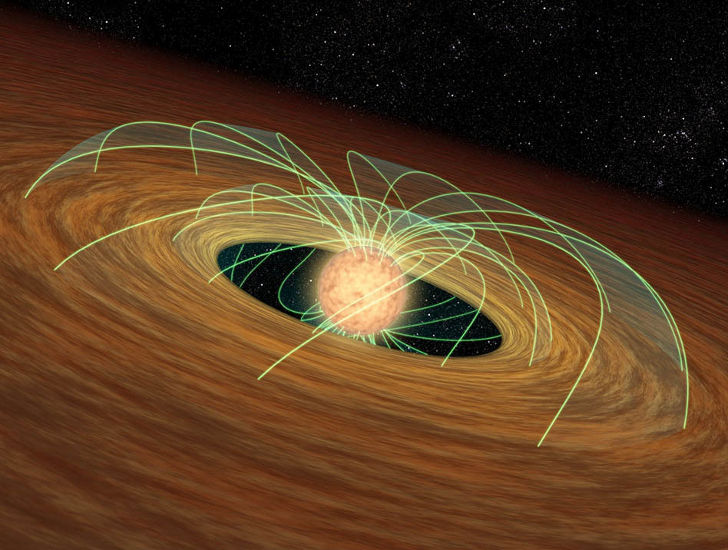Daily Image
06-10-2011Today's Colloquium: The appearance and spin evolution of strongly magnetic stars - Caroline D'Angelo (UvA)
| Submitter: | colloquium |
| Description: | A strong stellar magnetic field significantly alters the behaviour of an accretion disc around a star. In particular, at low accretion rates it is often assumed that the interaction between the field and the disc will expel the gas out of the disc in an outflow rather than allow it to accrete onto the star -- a state known as the ``propeller regime". However, recent work has suggested that if the disc is truncated close to the co-rotation radius (where the star's spin frequency equals the Keplerian frequency of the disc) the disc-field interaction will mostly confine the gas, preventing it from escaping from the disc. The interaction changes the density profile of the disc, and can completely halt accretion onto the star without producing an outflow. In turn, this forces the inner edge of the disc to stay trapped close to the co-rotation radius even when there is no net mass flow through the disc, so that the disc never moves into the true propeller regime. I will explain how a trapped disc can form and show how this can sometimes result in bursts of accretion onto the star, such as have been observed as low-frequency QPOs in X-ray pulsars SAX J1808.4-3658 and NGC 6440 X-2. Finally, I will discuss how trapped discs could also be responsible for the weak recurrent outbursts seen in NGC 6440 X-2 and IGR J00291+5934. Image Caption: The magnetic field of a star interacts with an accretion disc. The presence of a strong magnetic field substantially alters both the observational appearance and the spin evolution of the star. Disc Credit: NASA/JPL-Caltech/R. Hurt (SSC). |
| Copyright: | NASA |
| Tweet |  |
